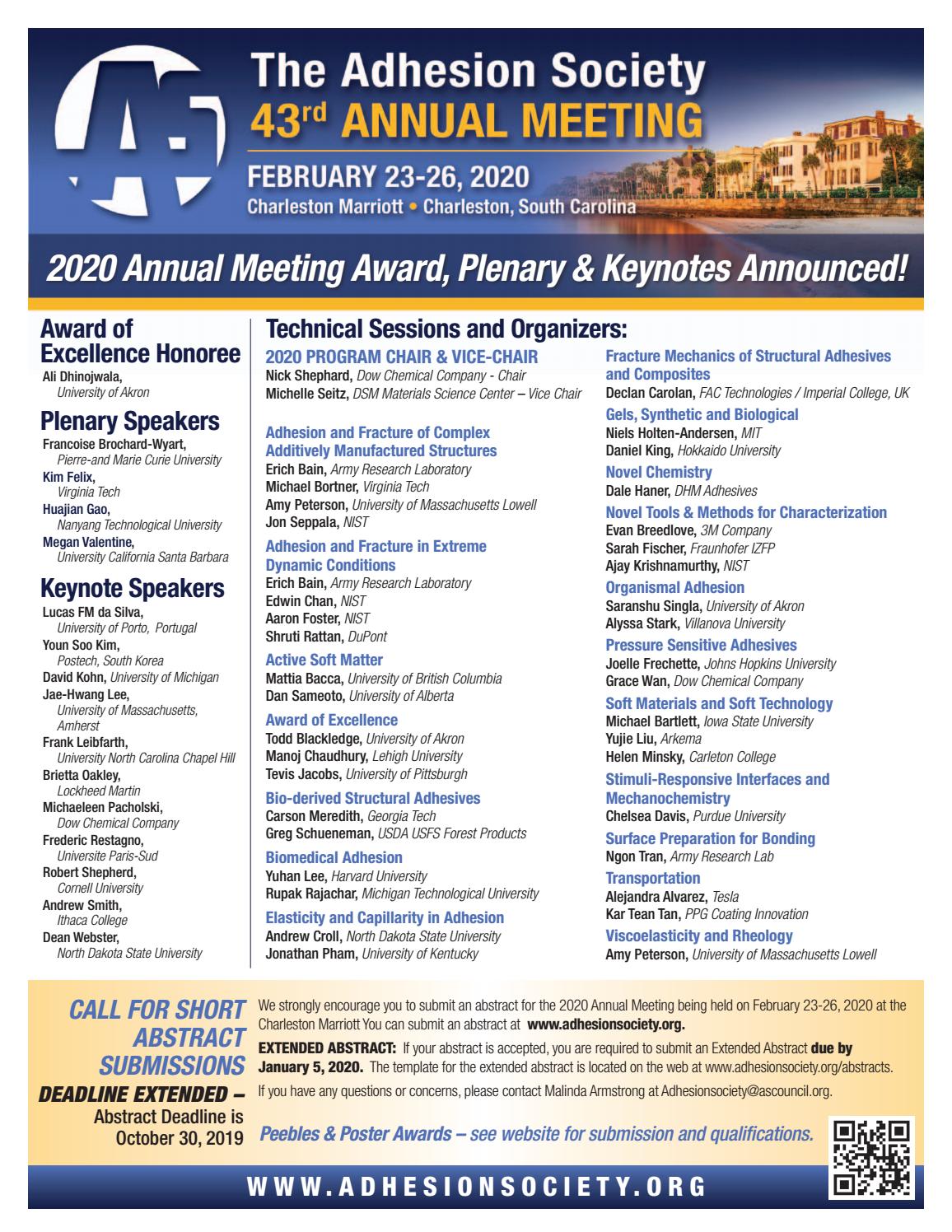02/26/20: Prof. Lee gives a keynote presentation.
Prof. Lee gives a keynote presentation in the Adhesion Society Conference in Charleston, SC.

Extreme Mechanical Responses of Polymers Revealed by Microscopic Ballistic Impact
The mechanical behaviors of polymers at ultra-high-strain rates (UHR>106/s) are generally complex due to their macromolecular structures and inter-molecular interactions, which inherently make their deformation very susceptible to strain rate and temperature. When the UHS deformation of polymers exceeds the elastic regime, the strain-rate effect and temperature effect are significantly coupled through various dynamic effects including inertia, waves, and adiabatic processes. Despite the challenges arising from the complexity of the deformation mechanics, fundamental knowledge about the UHS inelastic responses of polymers has become more demanded for use in various protective materials, armors, and novel manufacturing processes.
This talk will highlight our recent advances in the study of the UHR inelastic responses of polymers. Using laser-induced projectile testing (LIPIT), sub-micrometer thick freestanding polymer films are perforated in vacuum by the impact of microscale ceramic spheres at rapid speeds comparable to polymer’s speed of sound. We precisely measure the specific fracture energy of the polymer films and demonstrate the correlation between the fracture energy with polymer’s entanglement density and perforation speed. As an alternative method, polymer microspheres are accelerated and their extreme mechanical responses are studied through their UHR collisions to a rigid ceramic surface. Through temperature-controlled experiments, the effects of glass transition temperature on the UHR inelastic responses are quantitatively demonstrated. Our micro-ballistic characterization is further applied to diblock copolymer microspheres possessing systematically controlled nanostructures of both glassy and rubbery phases. Due to the impact-induced morphological transition of the nanostructures, the block copolymer microspheres exhibit novel viscoelastic responses. Other emerging opportunities from this novel UHR mechanical characterization method will also be discussed.
* This work is supported by the U.S. Army Research Laboratory under Grant No. W911NF-15-2-0026 (Program Manager: M. Fermen-Coker) and the NSF under Grant No. CMMI-1760924.
